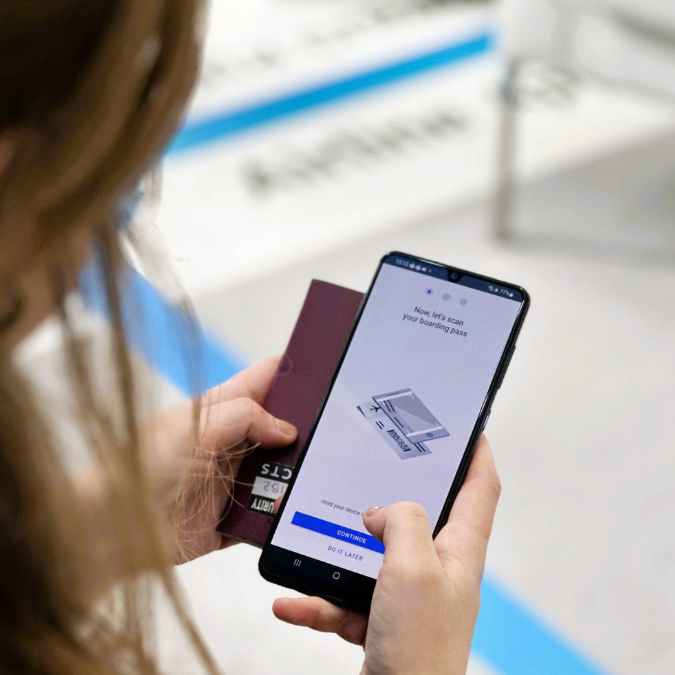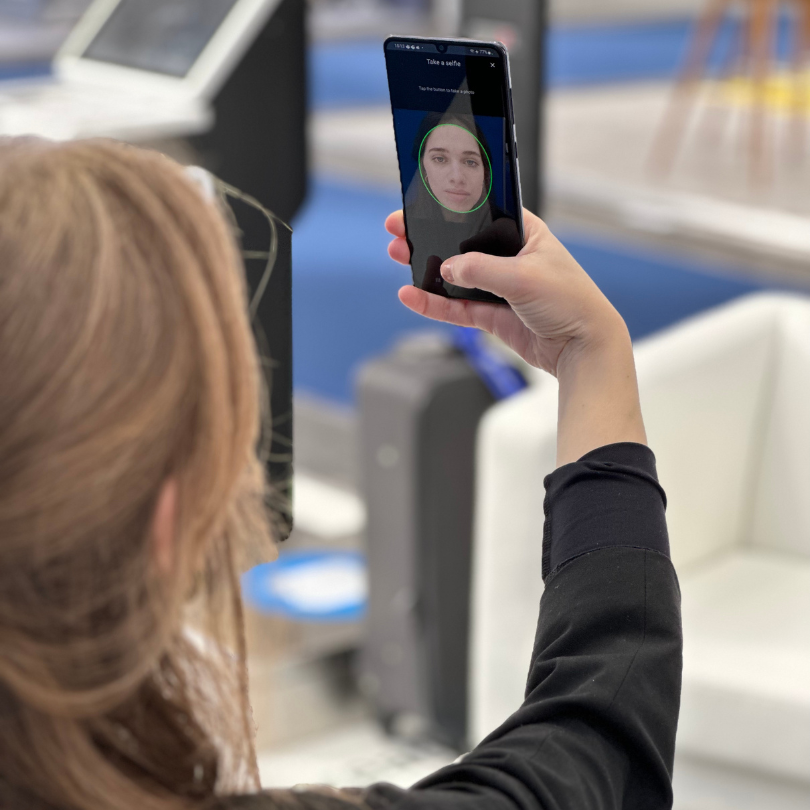What is Biometrics
Introduction
The need to verify the identities of individual people now extends across all manner of industries. In travel, for instance, airlines, airports, cruise lines, seaports and border forces need to be able to establish and authenticate the credentials that travellers present to them, to ensure swift and seamless passage -- and to safeguard national and international security. Elsewhere, providers of goods, services, and digital assets like software or databases need convenient and secure ways to verify the legitimacy of their consumers and users.
Biometrics is one of the methods of achieving these aims that continues to gain traction. However, this is a field that, in some applications, is still in its early days. It is also an area that many people still struggle to understand, and whose implications and merits they find difficult to appreciate.
In this light, we will be presenting a series of articles, exploring the biometric landscape, and looking to shed light on its various aspects.
We begin with a simple question:
What is Biometrics?
Biometrics is a scientific term which has its roots in two Greek words: “bio”, meaning “life”, and “metric”, meaning “to measure.” In more formal terms, biometrics is the measurement and statistical analysis of living beings' unique physical and behavioural characteristics.
Concerning human identification and verification, biometrics is a technique used for recognition (determining who someone is) and authentication (establishing that someone is who they say they are).
The criteria for the selection of the biometric trait must rely on their universality (each person should have the biometric trait that is being used so everyone can use them – someone in a wheelchair will not be able to have their gait captured); uniqueness (to unequivocally recognise between distinctive people. everybody must be unique in terms of the biometric characteristic being utilized); permanence (the person’s trait must be invariable throughout their life); and collectability (the biometric characteristic must be measurable, there for collectable).
Verification and Identification
To be recognised, a person must go through an initial process of data capture. This process is called enrolment. The data recorded are stored to allow comparison to other samples. Verification is the process of matching the person’s sample against their ID, like a passport. This 1:1 process determines if the person is who they claim they are. The process of identification is known as 1:N, and it compares the person’s sample against all the other samples enrolled in the same system or gallery.

Biometrics in Identity Verification
Established identification techniques typically require any combination of the following:
- Something that a person has - such as a token, card, or badge.
- A person can supply a specific credential -- such as a password or username.
- A unique characteristic that a person has -- like their fingerprint, face, or the retina of their eye.
Biometrics concerns itself with these unique traits, which may be physiological and/or behavioural.
Physical Identifiers
Biometric physical identifiers rely on the physiological characteristics of the person being measured. They include:
- Facial recognition
- Fingerprint scanning
- Finger geometry (relating to the unique size and position of fingers)
- Iris recognition
- Vein recognition
- Retina scanning
- Voice recognition
- DNA (deoxyribonucleic acid) matching
- Digital signatures
Behavioural Identifiers
The behavioural characteristics which uniquely identify an individual under a biometric system include the following:
- Physical gestures
- Manner of walking
- Mouse and finger movements on computer systems and touch screens
- Typing patterns on keyboards and keypads
- Patterns of behaviour on websites and social media.
Some behavioural identifiers can be used to provide continuous authentication.
Know more about our Facial Recognition Engine here
Components of Biometric Measuring Devices
Regardless of the characteristics in question, biometric measuring devices have certain elements in common.
Scanning Device
To observe and record the biometric trait being measured, the device will have some form of a scanner, which is often linked to a dedicated camera or capturing mechanism.
Biometrics Software
The scanning device will typically have a connection to a computer system or local software which converts the scanned biometric data into a standard digital format. Usually, this software will also have an internal set of rules or an algorithm that can compare matching points of the observed input with data stored in a central recognition system.
Biometrics Database
Finally, that central recognition system will have a dedicated database for real-time operations, which may also securely store biometric data for future comparison.
Biometric Measurement Procedures
The workflow for biometric measurement also has a standard format across several applications. The process typically includes the following steps:
Enrolment
Here, the biometric database captures basic information concerning the subject. The scanning device then captures a record of the unique biometric trait in question.
Storage
Rather than saving an entire image or video, most biometric systems will convert the observed characteristic into a code language graph. Modern systems may gather biometric information locally and then cryptographically hash it so that authentication or identification can be implemented without direct access to the original biometric data itself.
Comparison
The biometric recognition software compares the characteristics you offer in real-time to the information that it has on record. The results of this comparison determine whether the system accepts or rejects your claim to be who you say you are.
Know more about our Seamless Journey Platform® here
Some Applications of Biometrics
Users of modern smartphones will already be familiar with personal biometric controls such as those that provide access to the device via face or fingerprint recognition.
Biometrics in the form of fingerprint and DNA matching has been used by law enforcement for decades, in criminal investigations and, controversially, in certain types of criminal profiling.
National identity card schemes and health insurance programmes often use biometric traits to authenticate citizens and patients.
In the travel industry, biometric systems using technologies such as facial recognition and iris recognition now facilitate the movement of travellers, and the work of the airlines, airport staff, and border officials who interact with them.
General Advantages of Biometrics
Unlike passwords and physical tokens, biometric traits are generally difficult to fake or steal, and provide ease of use and convenience - after all, there are no letter/number combinations to remember or plastic wallets to manipulate. Most physiological characteristics remain unique and generally the same, throughout an individual's life, and are also non-transferable. From an operational standpoint, biometric templates and infrastructure take up little storage space, making installations easier to set up and run.
The use of biometrics helps prevent fraud by ensuring that only authorised individuals can access sensitive information or perform certain actions. This is particularly important in financial transactions, border control, and other security-sensitive areas.
Biometric systems offer high accuracy in identifying individuals, reducing the chances of false positives or negatives, especially when using multiple biometric factors for authentication. This convenience can lead to increased user satisfaction and productivity. Biometric systems also streamline processes by automating identity verification, reducing the time and resources required for manual checks.
Furthermore, these systems can be easily integrated with existing security infrastructure and software applications, enabling seamless authentication across different platforms and devices.
At the same time, biometric data can offer enhanced privacy protection compared to other forms of identification, as it remains under the control of the individual and cannot be easily shared or stolen like passwords or ID cards.
Conclusion
Biometrics operates on the fundamental principle of using unique biological traits to identify and authenticate individuals. Each biometric technique, physical or behavioural identifiers, leverages distinct biological traits, offering varying levels of accuracy, convenience, and applicability across different scenarios. As technology advances, biometric systems continue to evolve, becoming more sophisticated, reliable, and integrated into various aspects of everyday life, from unlocking smartphones to securing sensitive data in organisations.
This concludes our brief introduction to the concept of biometrics. Keep watching this space to find out more about biometrics, as we continue our series of articles.
To know more about what we do and how we can help your organisation don’t hesitate to contact us.
